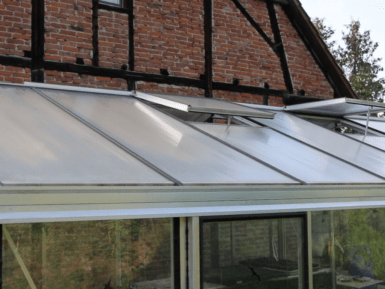
Grove - Temperature & Humidity Sensor (SHT31)
Grove - Temp&Humi Sensor(SHT31) is a highly reliable, accurate, quick response and integrated temperature & humidity sensor.
Overview
The sensor(chip) used in the module is designed with Sensirion’s CMOSens® technology. The chip is well calibrated, linearized and compensated for digital output.
The typical accuracy of this module can be ±2%RH (for relative humidity) and ±0.3°C (for temperature).
This module is compatible with 3.3 Volts and 5 Volts and hence does not require a voltage level shifter. This module communicates using with I2C serial bus and can work up to 1 MHz speed. We also have provided a highly abstracted library to make this product more easier to use.
Using the sensor is easy.
For Seeeduino (compliant with Arduino), just connect this breakout board with the main control board via Grove cable.
Then use the provided library and example/demo code available at GitHub to get your data. If you’re using an Arduino without a Base Shield, simply connect the VIN pin to the 5V voltage pin, GND to ground, SCL to I2C Clock (Analog 5) and SDA to I2C Data (Analog 4).
Features:
- Highly reliable, accurate and quick response time
- Grove compatible and easy to use
- Well calibrated, linearized, compensated for digital output
- Highly abstracted development library
Get Inspired
Easily monitorize your garden's environment with simple components.

Greenhouses are excellent ways to grow plants due to their compact nature and the fact that they can absorb and store the sun’s light as heat to keep their internal temperature higher than outside. But when it comes to adding ventilation for cooling things down, decreasing the humidity, or simply to avoid rain, most non-commercial ones still rely on someone to manually open or close the windows. This need for automation is what drove Michael Bernhard to create his own greenhouse climate regulation system. This project relies on a Nano Every to read the ambient temperature/humidity as well as control up to six motorized windows via three L298N dual H-bridge drivers. The Nano receives commands and other data over WiFi from an accompanying ESP8266 board for wireless remote control with a mobile phone. Each of these components and their connectors were added to a custom PCB and placed within a simple wooden enclosure to keep moisture out. An LCD at the top shows pertinent information such as the time, temperature, and humidity. The aforementioned WiFi control scheme not only allows for remote control of the windows, but also for the visualization of historical sensors data on a graph. Safety information, including errors and stored EEPROM data, can be viewed on the web application, too. To see more about this project, you can read Bernhard's write-up here on Hackster.io.









